
IUCN STATUS
Vulnerable
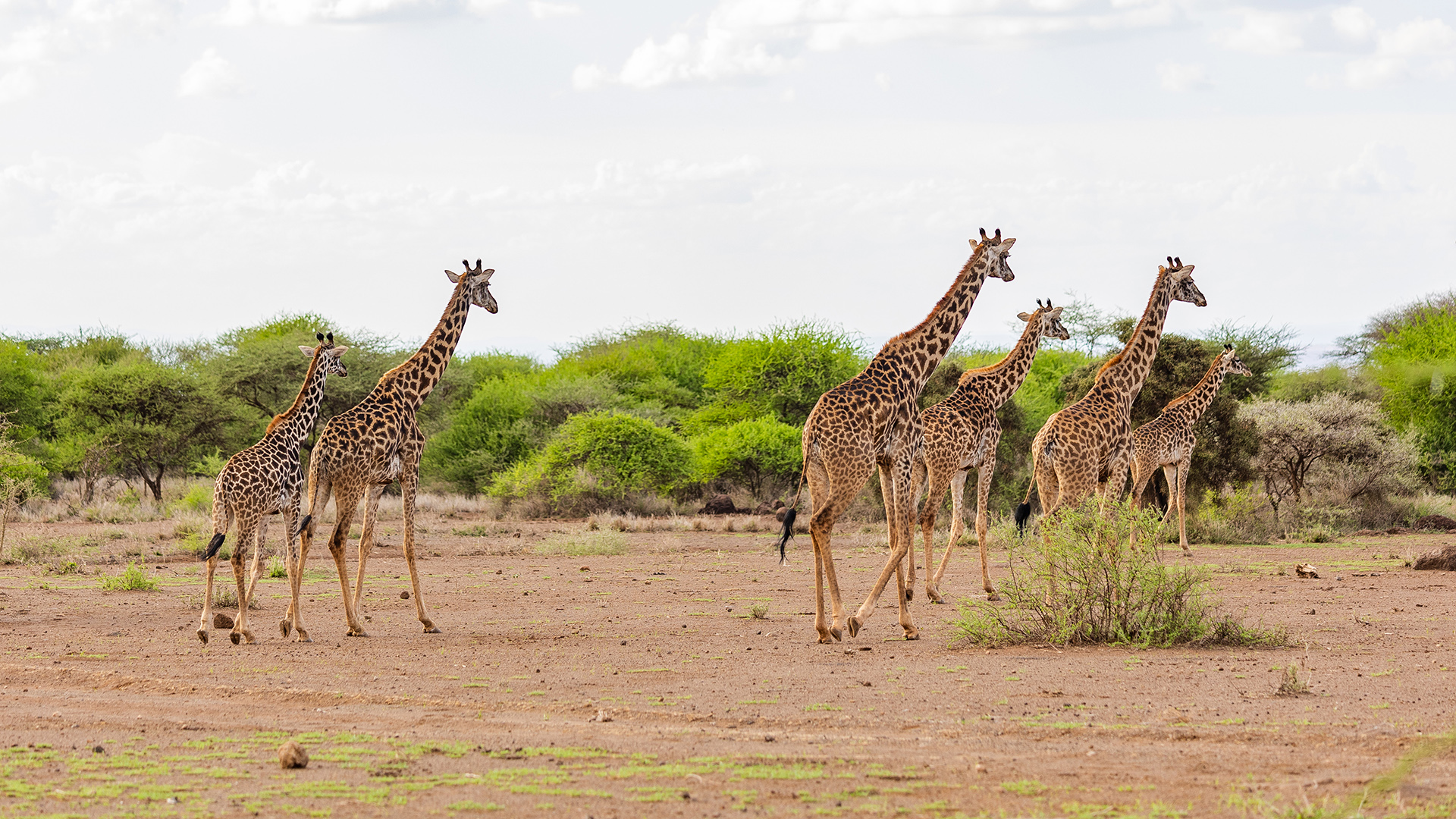
Giraffe camelopardalis
By browsing high up vegetation, they promote growth of plants and trees, creating microhabitats for other species. Through their dung and urine, they help distribute nutrients throughout their habitat.

Vulnerable

~68,293* mature individuals, declining ️- with small populations in West and Central Africa seriously threatened; last assessed in 2016
* According to the International Union for the Conservation of Nature (IUCN)

Herbivorous

Open woodlands, wooded grasslands and savannah

Mostly eastern and southern Africa, although small, isolated populations exist in western and central Afica

Height – 4-5.2 m, weight – 700-1400kg

Habitat loss, hunting and poaching, captivity
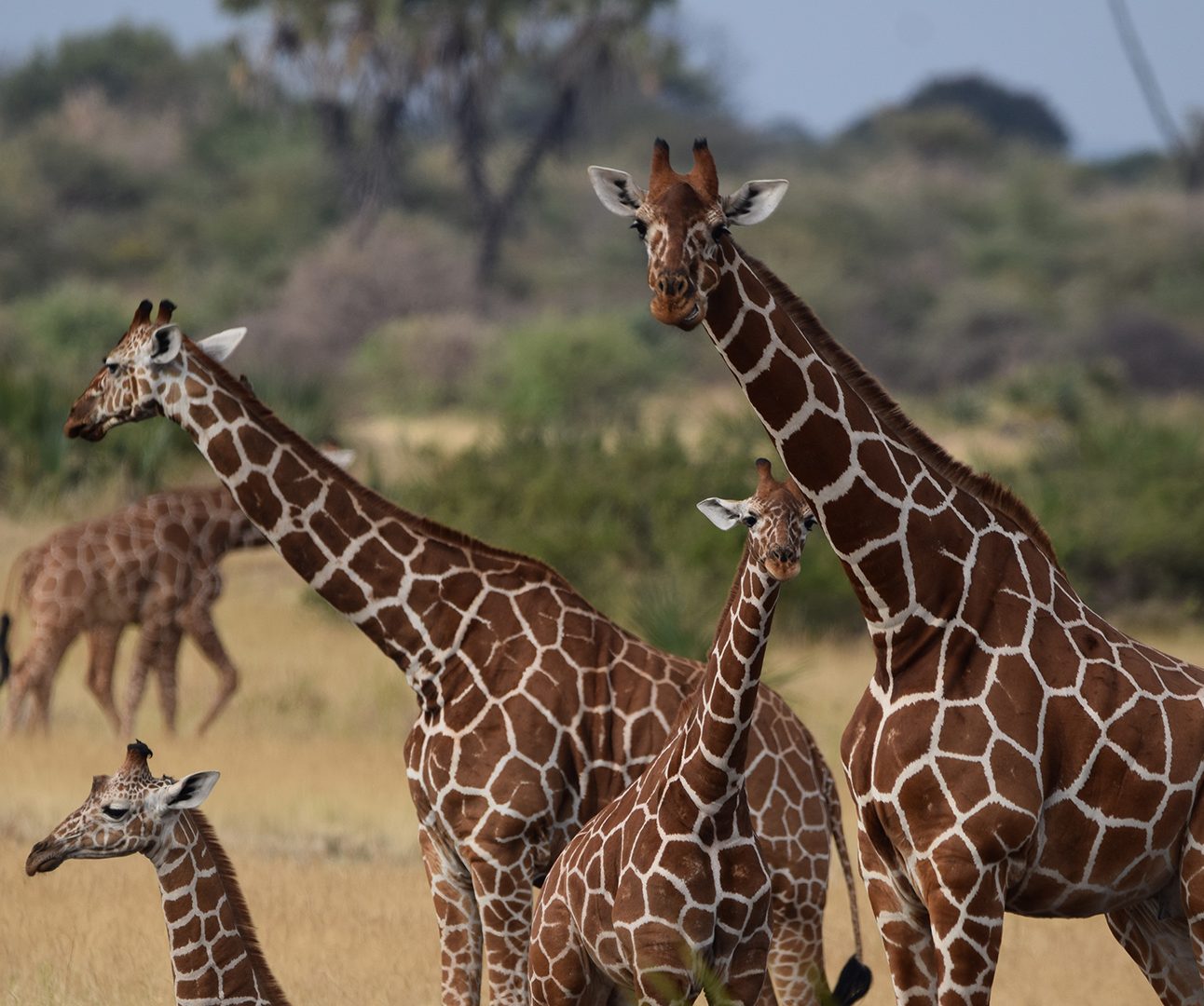
A giraffe’s spots are completely unique to each individual, much like our fingerprints. We can use their spot pattern to identify them!
The giraffe is the tallest land animal in the world – a male giraffe stands up to 5.5m high and weighs nearly two tonnes. However, size differs between males and females, who are generally smaller at an average of 4.3m.
Despite its long neck, the giraffe only has seven neck vertebrae – the same number as humans and nearly all other mammals – the bones are simply extremely elongated.
Giraffes also have a distinctive feature on their head – horn-like protuberances called ossicones. Ossicones are permanent ossified cartilage that appear on both males and females. Males use their ossicones as weapons when fighting and it is believed that the ossicones may play a role in giraffe sexual behaviour.
Giraffes are strong and fast. A well-placed kick could shatter the skull of a predatory lion, while a running giraffe can reach speeds in excess of 55km per hour!
There are currently nine sub-species of giraffe recognised by the IUCN, in Africa (the West African giraffe, the Nubian giraffe, the Kordofan giraffe, the Masai giraffe, Thornicroft’s giraffe, Rothschild’s giraffe, Angolan giraffe, South African giraffe and the reticulated giraffe), each with distinctive patchwork markings believed to have evolved as a camouflage to help giraffes blend in with the dappled lighting underneath the trees in their wooded savannah habitat.
There is a growing body of evidence suggesting that there are four distinct species of giraffe: Masai, Southern, Northern and Reticulated, with several subspecies (https://giraffeconservation.org/giraffe-species/).
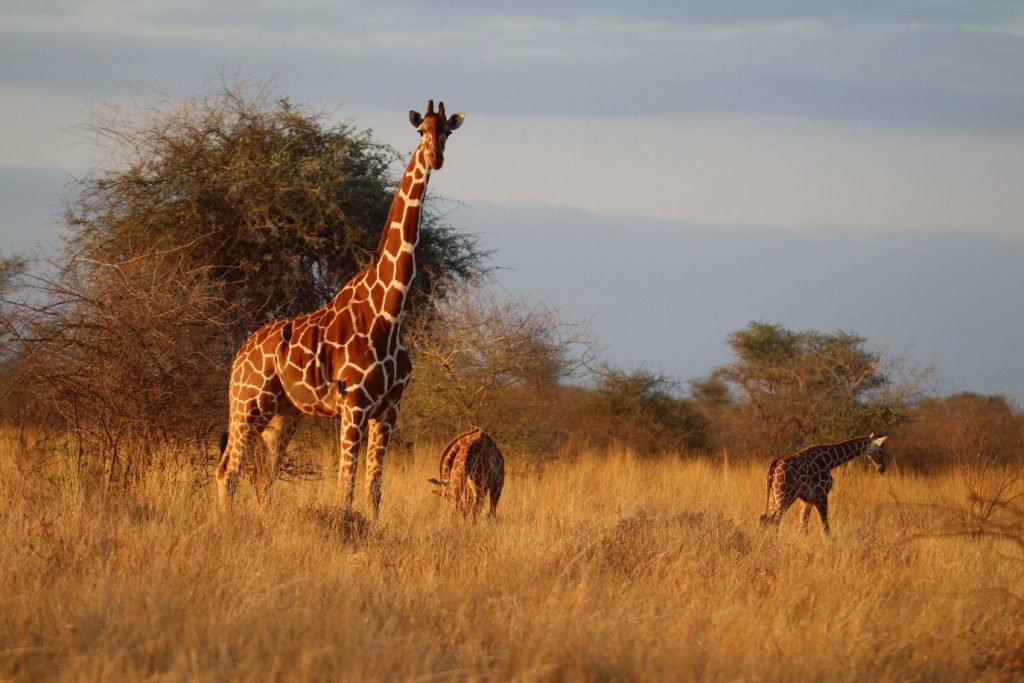
Reticulated Giraffe twins, Meru National Park © Born Free
Across their range giraffes utilise open woodlands, wooded grasslands or shrublands and savannahs. Within these habitats, giraffe consume leaves and twigs from over 100 different tree and shrub species, but prefer acacia, as well as grass and fruit.
Giraffes have a 25-year lifespan and live in dynamic herds of around 3-10 individuals that might consist of males and females of any age, whilst older males live in bachelor herds. Large congregations of 100 or more giraffes have been observed. Long-term associations do exist, seemingly depending on factors like family relationships, sex and age.
After a 15-month gestation, the female will give birth to a single calf, measuring 1.8m at birth and growing 2cm a day until maturity. Young calves can be very playful.
Male giraffes engage in aggressive interactions including ‘necking’, where males compete for dominance by swinging their necks at each other, delivering brutal blows to the other with their ossicones.
Giraffes can vocalise but rarely do. Some vocalisations that have been recorded include snorts, bleats (by calves), bellows, coughs and humming.
Habitat loss and fragmentation due to human population growth and climate change are the main threats to giraffes in the wild. As human populations grow, more giraffe habitat is converted to agriculture, infrastructure and extractive industries such as mining, quarrying and fossil fuel production, leaving less natural habitat for giraffes available.
In some parts of their range, giraffes are hunted legally for sport and for their parts. However, in many areas, giraffes poaching is happening for bushmeat and the illegal giraffe trade. Where civil unrest and weak law enforcement is rife, some giraffe sub-species populations have been devastated.
Giraffes are also exploited in zoos and circuses. Wild giraffes are specialised herbivores, living complex lives and roaming over large expanses, so being confined to small enclosures can lead to extreme frustration and boredom. Giraffes in captivity often exhibit abnormal behaviours, such as repeatedly twisting their necks or licking the bars.
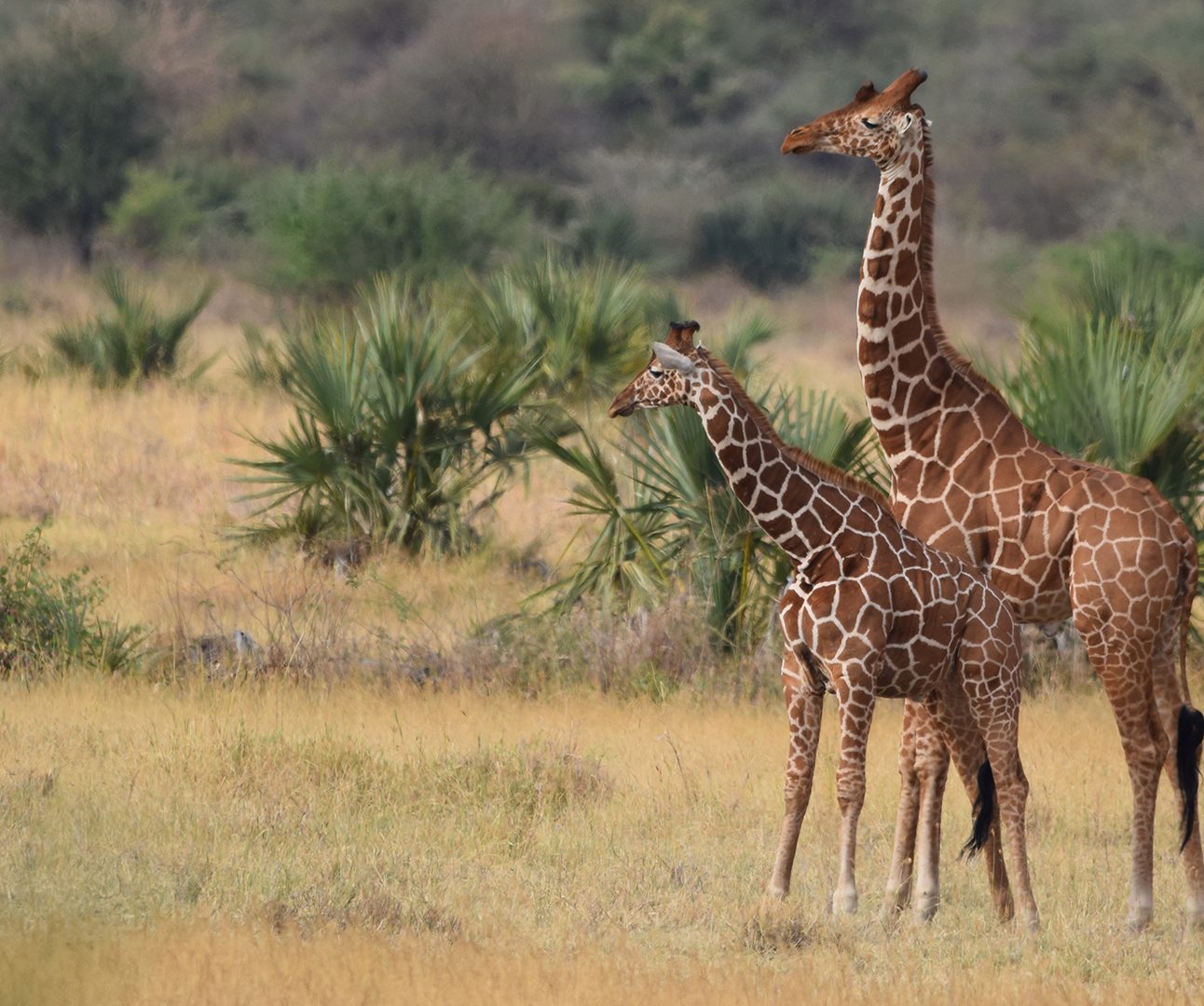
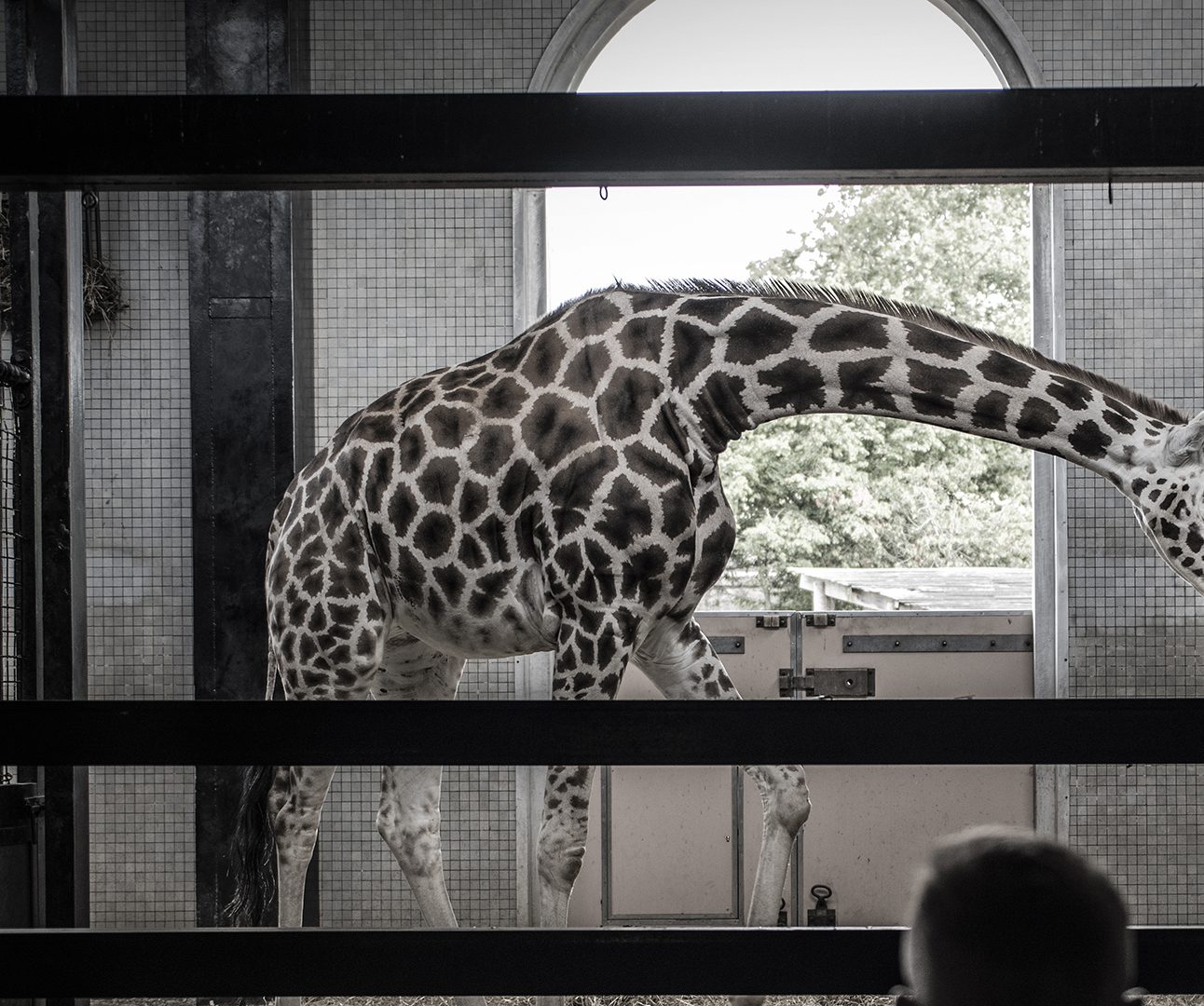
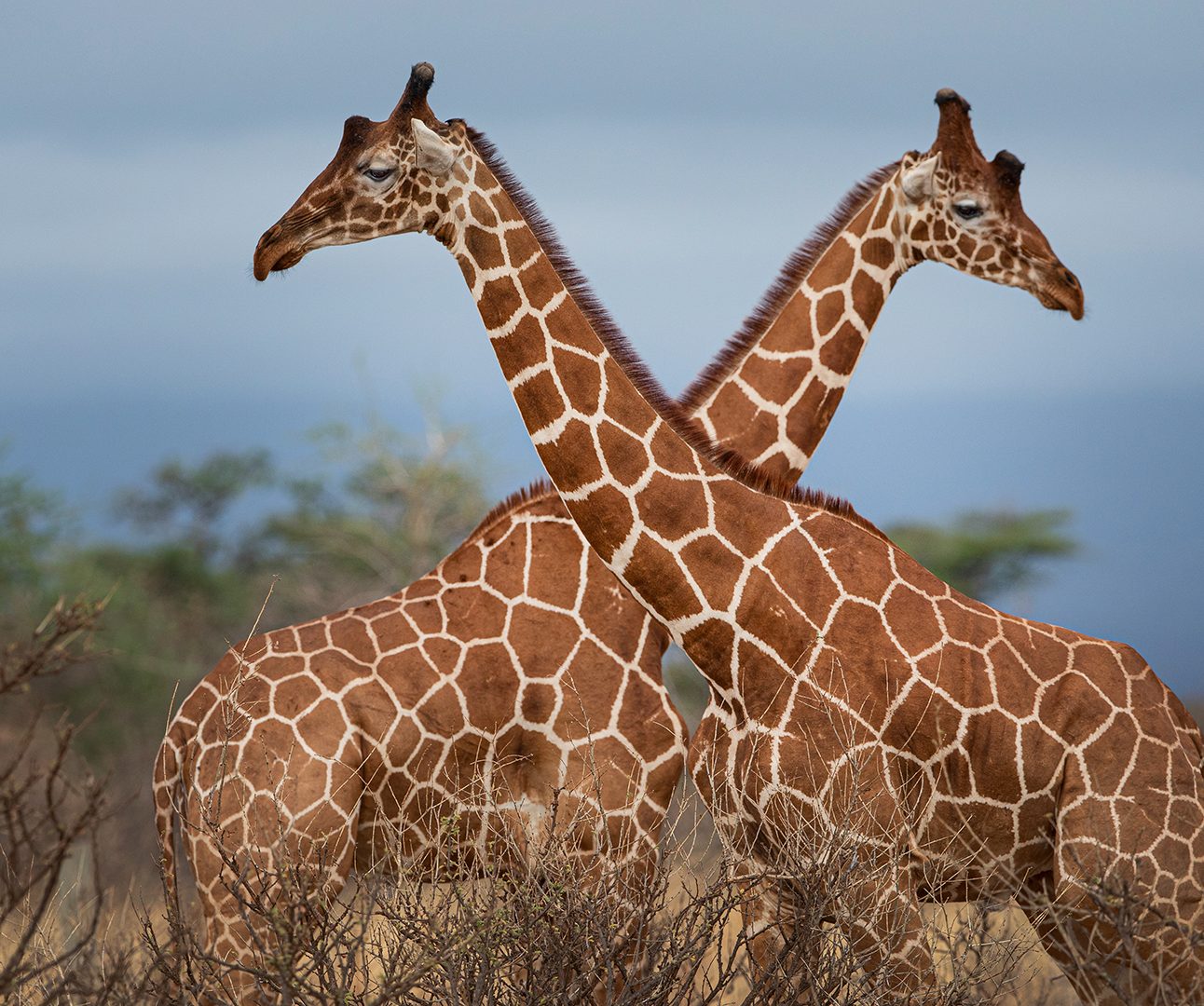
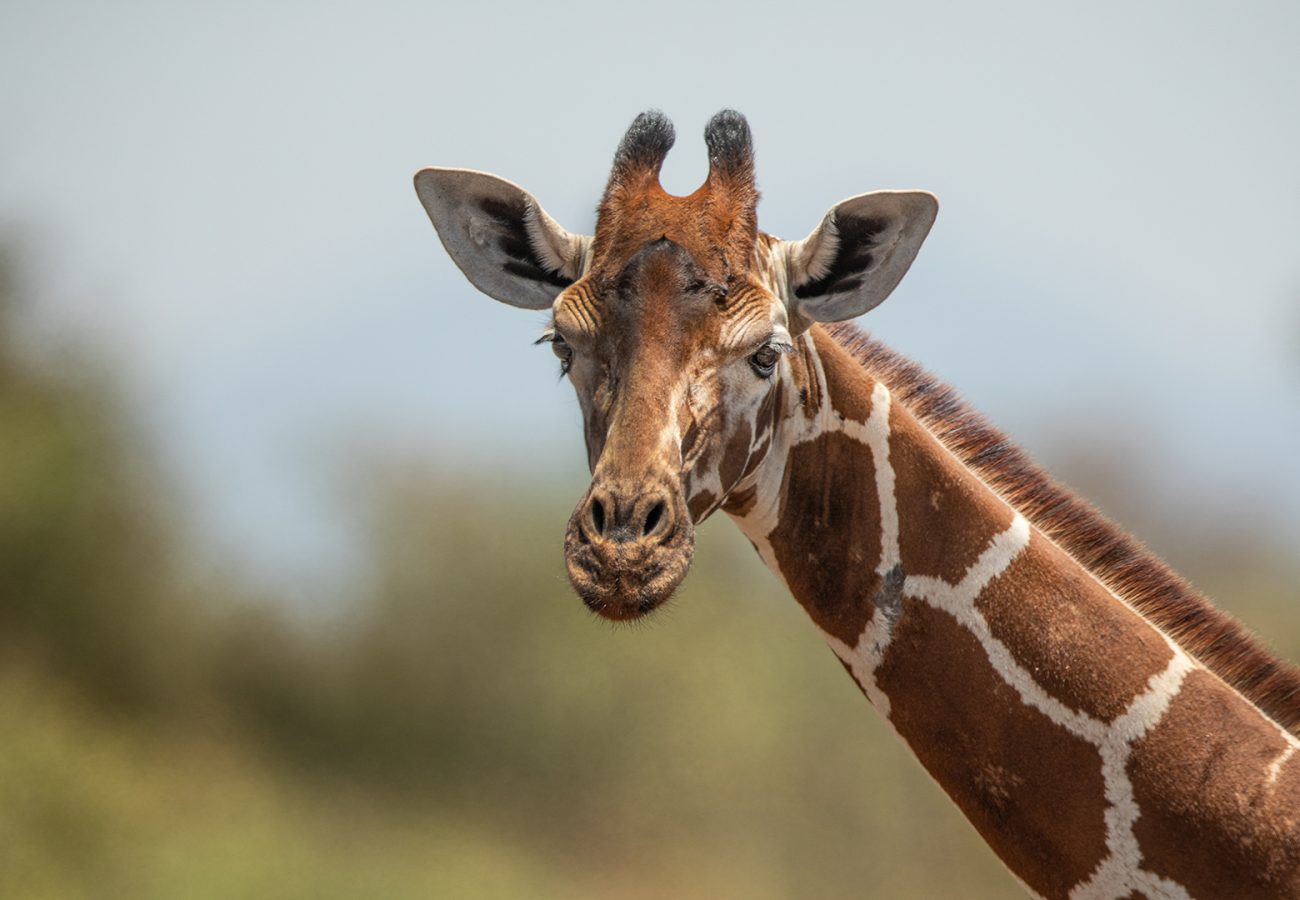
You can support Born Free's work to protect giraffes, by adopting the Giraffe Family in Meru